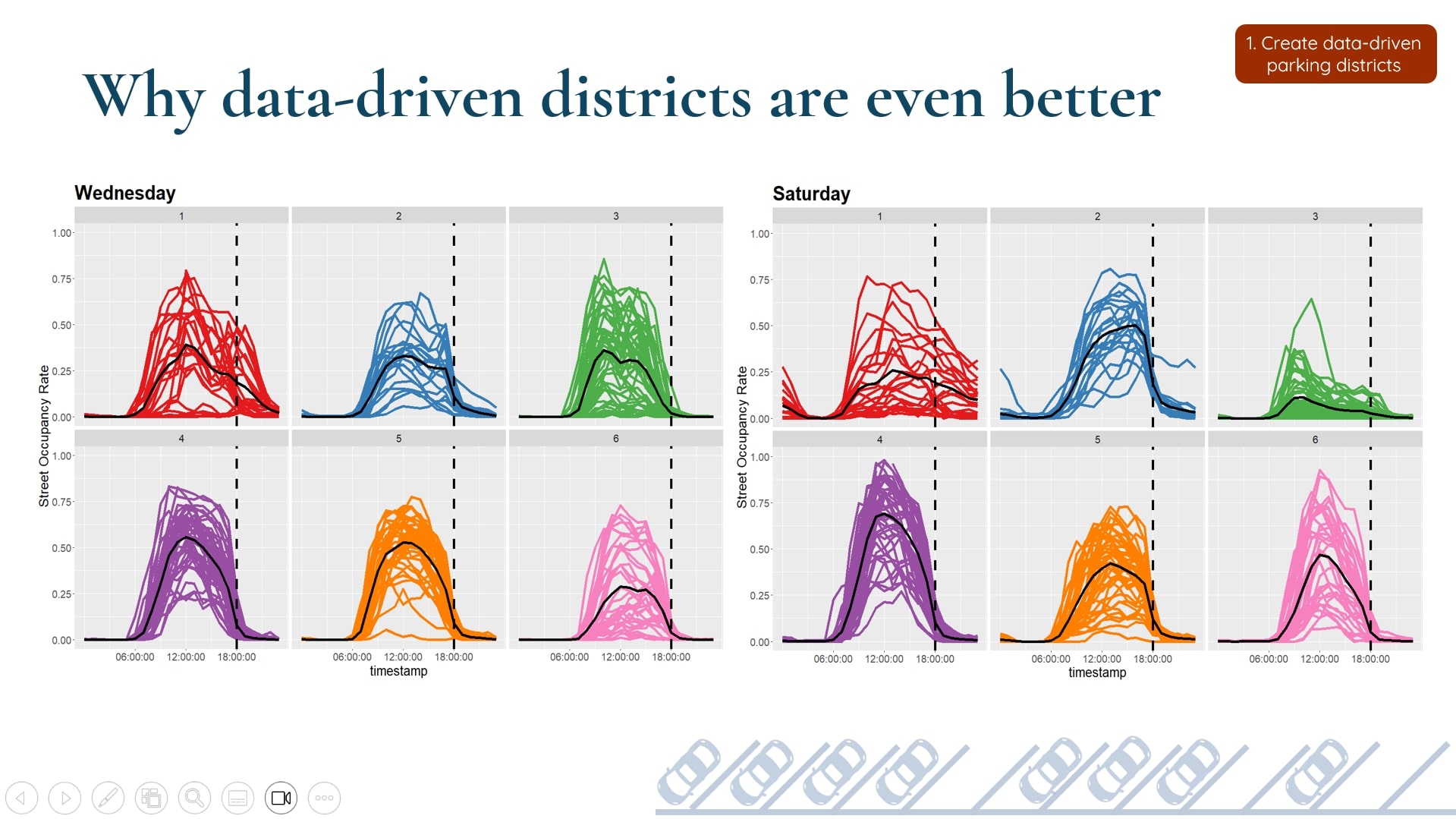In collaboration with the City of El Paso, our team developed a data-driven parking pricing strategy to better align on-street demand and supply. Using meter transaction data, foot traffic analytics, and spatial clustering, we designed behavior-based parking districts informed by real occupancy patterns. We built a prototype dashboard and predictive modeling system that recommends price adjustments based on time-of-day and day-of-week forecasts, eliminating the need for expensive sensors. Our solution balances simplicity and precision—offering intuitive pricing zones while capturing localized demand shifts.
In this project, I served as the research lead, conducted a comparative analysis of parking strategies in six U.S. cities, and contributed to the overall system design. I developed an interactive dashboard to visualize occupancy trends, created predictive models to forecast demand by district and time, and helped shape the presentation strategy for communicating our recommendations. Our approach clustered streets into behavior-based pricing zones and proposed a scalable framework that helps El Paso adjust parking rates proactively while assisting dynamic price parking planning.


